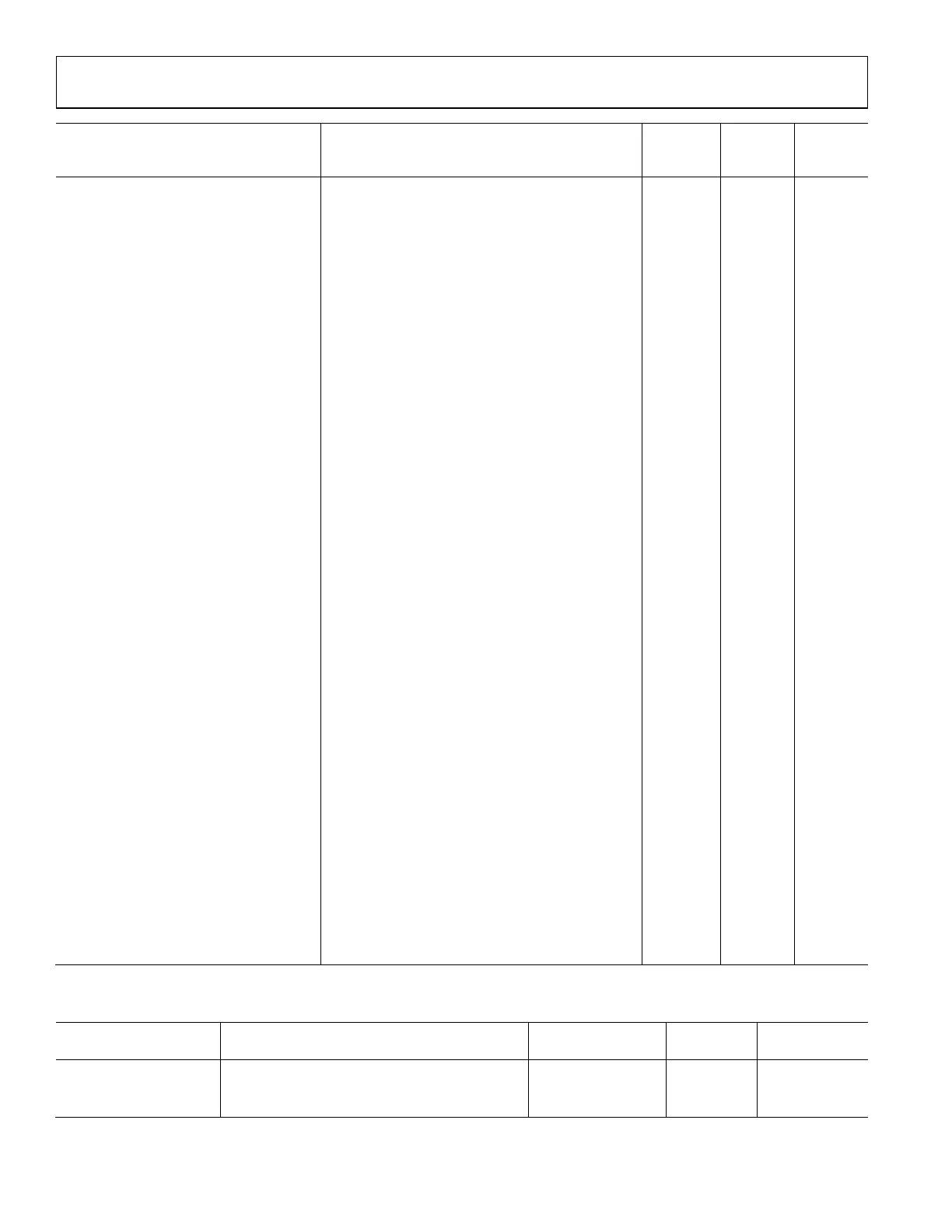UG-1828 Preliminary Technical Data
Rev. PrB | Page 176 of 277
DIGITAL PREDISTORTION
BACKGROUND
It is well known that one of the main criteria of a power amplifier (PA) operation is its ability to maintain linearity, i.e. the gain is
constant regardless of the input amplitude. However, in practice, a power amplifier can only maintain linearity up to a certain input level
beyond which the gain starts to lower and the power amplifier enters into a nonlinear or compression region as shown in Figure 166. For
most low-power linear amplifiers, they operate in the linear region as shown in the “LINEAR REGION” circle. Unfortunately, a power
amplifier that operates mostly in the linear region has lower efficiency. Power amplifier efficiency is defined as the ratio of output RF
power to the DC supply power. Therefore, it is desirable to operate power amplifier at high efficiency to save DC power and reduce heat
dissipation.
To achieve higher power amplifier efficiency, the highest input signal peak is usually set at around 1dB (P1dB) compression region as
shown in the “1dB COMPRESSION REGION” circle in Figure 166. However, compression of the peak signals produces harmonics and
hence intermodulations. Some of the intermodulations fall back right into or adjacent to the carrier spectrum, therefore not only
distorting the transmit signal but also widening the spectrum of the transmit signal, so called spectral regrowth. If left untreated, the
error vector magnitude (EVM) performance of the transmit signal would be degraded and the spectral regrowth would interfere adjacent
channels, resulting in worse than required adjacent channel power ratio (ACPR) performance. Digital Pre-Distortion (DPD) is designed
to mitigate this problem.
PA OUTPUT
1dB
COMPRESSION
REGION
PA INPUT
LINEAR REGION
IDEAL PA OUTPUT
ACTUAL PA OUTPUT
1dB
24159-140
Figure 167. Ideal Power Amplifier Output vs. Actual Power Amplifier Output
ADRV9001 DPD FUNCTION
The ADRV9001 device provides a fully integrated DPD function that supports both narrow-band (NB) and wide-band (WB)
applications. It is a hardware/software combined solution which performs linearization of the power amplifier by pre-distorting the
digital transmit signal with the inverse of the power amplifier’s nonlinear characteristics. After amplifying by the power amplifier, the
pre-distortion compensates power amplifier’s nonlinearity so the amplified RF transmit signal becomes linear. Therefore, the integrated
DPD solution allows power amplifier to operate at very high efficiency while achieving a satisfactory EVM and ACPR performance.
Figure 167 depicts a high level block diagram of the DPD algorithm. As shown in this figure, before the power amplifier, a “Predistortor”
block is added in the transmit datapath which distorts the transmit signal d(t) with the inverse of the power amplifier’s nonlinear
characteristics, as shown by the first Input/Output figure curve. Spectral regrowth is introduced after the pre-distortion. However, after
the “pre-distorted” transmit signal x(t) being amplified by the power amplifier, the power amplifier nonlinear characteristics, as shown
by the second Input/Output figure curve cancels out the pre-distortion. Therefore, the output of the power amplifier y(t) becomes linear,
as shown by the third Input/Output figure curve. In addition, the spectral regrowth after pre-distortion is also corrected. The “DPD
Coefficients Computation” block is used to compute the pre-distortion parameters by utilizing “Predistortor” output signal x(t) as well as
the power amplifier output signal y(t) through a feedback path. It models the behavior of the power amplifier in the reverse direction, i.e.
from output to input, therefore, it characterizes the inverse of the power amplifier nonlinearity and then feeds the parameters to the
“Predistortor”.

